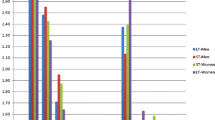Abstract
Beliefs about role sharing or sex typing in occupations, positions of authority, the care of infants and children, housekeeping chores, responsibility for the economic support of the family, and the handling of family finances were investigated for 1,048 men and women residing in New York City. Beliefs about goals of the women's movement, about equality of the sexes, and about the elimination of sex typing in the socialization of children were also investigated. Questionnaires were distributed in the spring and fall of 1973 at several business firms, university campuses, shopping centers in black and white working class districts, and at a professional building. All of the independent variables — gender, age, marital status, occupation, educational level, religion, and ethnicity — were significantly related to beliefs about sex roles. Gender was the overriding independent variable, however. Significant differences in beliefs between the sexes persisted within the categories established by the other independent variables. For the total sample, discrepancies in the beliefs of men and women ranged from very highly significant to significant on almost all items on the questionnaire, although a majority of both sexes opted for more equality, less sex typing, and more role sharing. Role conflict, insofar as this stems from a lack of mutuality in role definitions and expectations, would appear to be a likely experience of many of the men and women interviewed. The role conflict model is a valuable tool that should be applied to actual interactional settings, involving men and women, in future research.
Similar content being viewed by others
References
Axelson, L. J. The working wife: Differences in perception among Negro and white males. Journal of Marriage and the Family 1970, 32 197–214.
Balswick, J. O., & Peek, C. W., The inexpressive male. The Family Coordinator 1971, 11 363–368.
Becker, H. S., The teacher in the authority system of the public school. Journal of Education 1953, 27 128–141.
Becker, H. S., Greer, B., Hughes, E. C., & Strauss, A. L. Boys in white: student culture in medical school. Chicago: University of Chicago Press, 1961.
Burchinal, L. J. The rural family of the future. In J. N. Edwards (Ed.), The family and change. New York: Alfred Knopf, 1969.
Corwin, R. G., & Taves, M. J. Nursing and the health professions. In H. E. Freeman (Ed.), Handbook of medical sociology. Englewood Cliffs, New Jersey: Prentice-Hall, 1963.
Cuber, J. F., & Haroff, P. B. The significant Americans. New York: Appleton-Century-Crofts, 1966.
Erlanger, H. Social class and corporal punishment: A reassessment. American Sociological Review 1974, 39 68–85.
Goode, W. J. A theory of role strain. American Sociological Review 1960, 25 483–496.
Gordon, C. Social characteristics of early adolescence. Daedalus 1971, 10 931–960.
Hacker, H. M. The new burdens of masculinity. Marriage and Family Living 1957, 19 229–233.
Haug, M. R., & Sussman, M. B. Professional autonomy and the revolt of the client. Social Problems 1969, 17 153–160.
Holmstrom, L. L. The two career family. Cambridge, Massachusetts: Schenkman, 1972.
Iscoe, I., Williams, M., & Harvey, J. Age, intelligence and sex as variables in the conformity behavior of negro and white children. Child Development 1964, 35 451–460.
Kagan, J., & Moss, H. A. Birth to maturity. New York: Wiley, 1962.
Knox, W. E., & Kupferer, H. E. A discontinuity in the socialization of males in the United States. Merrill-Palmer Quarterly 1972, 17 251–262.
Komarovsky, M. Cultural contradictions and sex roles. American Journal of Sociology 1946, 51 182–189.
Komarovsky, M. Blue-collar marriage. New York: Random House, 1964.
Komarovsky, M. Cultural contradictions and sex roles: The male case. American Journal of Sociology 1973, 78 873–884.
Komarovsky, M. Some problems in role analysis. American Sociological Review 1974, 38 649–662.
Ladner, J. Tomorrow's tomorrow. Garden City, New York: Doubleday, 1971.
Lever, J., & Schwartz, P. Women at Yale. Indianapolis, Indiana: Bobbs-Merrill, 1971.
Merton, R. K., Social theory and social structure. New York: The Free Press, 1957.
Neugarten, B. L., & Gutmann, D. L. Age-sex roles and personality in middle age: A thematic apperception study. In B. L. Neugarten (Ed.), Middle age and aging. Chicago: University of Chicago Press, 1968.
Rosenkrantz, P. S., Vogel, S. R., Bee, H., Broverman, I. K., & Broverman, D. M. Sex role stereotypes and self-concepts in college students. Journal of Clinical and Consulting Psychology 1968, 32 287–295.
Safilios-Rothschild, C. The influence of the wife's degree of work commitment upon some aspects of family organization and dynamics. Journal of Marriage and the Family 1970, 32 681–691.
Scanzoni, J. Sexual bargaining. Englewood Cliffs, New Jersey: Prentice-Hall, 1972.
Steinman, A., & Fox, D. J. Male-female perceptions of the female role in the United States. Journal of Psychology 1966, 64 265–276.
Steinman, A., & Fox, D. J. Specific areas of agreement and conflict in women's self-perceptions and their perception of men's ideal woman in two South American communities and an urban community in the United States. Journal of Marriage and the Family 1969, 31 281–289.
Steinman, A., & Fox, D. J. Attitudes toward women's family roles among black and white undergraduates. Family Coordinator 1970, 19 363–368.
Vreeland, R. S. Is it true what they say about Harvard boys? Psychology Today 1972, 6 65–68.
Yorburg, B. The changing family. New York: Columbia University Press, 1973.
Yorburg, B. Sexual identity. New York: Wiley, 1974.
Author information
Authors and Affiliations
Rights and permissions
About this article
Cite this article
Yorburg, B., Arafat, I. Current sex role conceptions and conflict. Sex Roles 1, 135–146 (1975). https://doi.org/10.1007/BF00288007
Issue Date:
DOI: https://doi.org/10.1007/BF00288007




